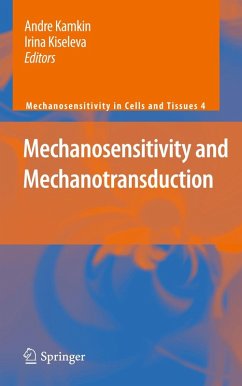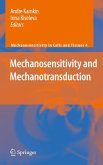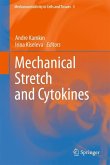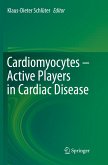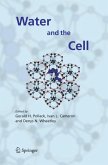This book presents the latest findings in the field of research of mechanosensitivity and
mechanotransduction in different cells and tissues. Mechanosensitivity and mechanotransduction
of the heart and vascular cells, in the lung, in bone and joint tissues, in sensor systems and in blood cells are described in detail. This Volume focuses on molecular mechanisms of mechanosensitivity and mechanotransduction via cytoskeleton. Integrin-mediated mechanotransduction, the role of actin cytoskeleton and the role of other cytoskeletal elements are discussed. It contains a detailed description of several stretch-induced signaling cascades with multiple levels of crosstalk between different pathways. It contains a description of the role of nitric oxide in regulation of cardiac activity and in regulation of mechanically gated channels in the heart. In the heart mechanical signals are propagated into the intracellular space primarily via integrin-linked complexes, and are subsequently transmitted from cell to cell via paracrine signaling. Biochemical signals derived from mechanical stimuli activate both acute phosphorylation of signaling cascades, such as in the PI3K, FAK, and ILK pathways, and long-term morphological modii cations via intracellular cytoskeletal reorganization and
extracellular matrix remodelling. Cellular and molecular effects of mechanical stretch on vascular cells are also discussed. This Volume highlights the role of mechanotransduction in the lung, in bone and joint tissues. For the first time mechanosensitivity and mechanotransduction in blood cells are discussed. It contains new insights into mechanosensitive K+ channels functioning in mouse B lymphocytes.
This book is a unique collection of reviews outlining current knowledge and future developments
in this rapidly growing field. Currently, investigations of the molecular mechanisms ofmechanosensitivity and mechanotransduction are focused on several issues. The majority of
studies investigate intracellular signaling pathways. Knowledge of the mechanisms which underlie these processes is necessary for understanding of the normal functioning of different organs and tissues and allows to predict changes, which arise due to alterations of their environment. Possibly such knowledge will allow the development of new methods of artificial intervention and therapies.
This book brings up the problem closer to the experts in related medical and biological sciences as well as practicing doctors besides just presenting the latest achievements in the field.
mechanotransduction in different cells and tissues. Mechanosensitivity and mechanotransduction
of the heart and vascular cells, in the lung, in bone and joint tissues, in sensor systems and in blood cells are described in detail. This Volume focuses on molecular mechanisms of mechanosensitivity and mechanotransduction via cytoskeleton. Integrin-mediated mechanotransduction, the role of actin cytoskeleton and the role of other cytoskeletal elements are discussed. It contains a detailed description of several stretch-induced signaling cascades with multiple levels of crosstalk between different pathways. It contains a description of the role of nitric oxide in regulation of cardiac activity and in regulation of mechanically gated channels in the heart. In the heart mechanical signals are propagated into the intracellular space primarily via integrin-linked complexes, and are subsequently transmitted from cell to cell via paracrine signaling. Biochemical signals derived from mechanical stimuli activate both acute phosphorylation of signaling cascades, such as in the PI3K, FAK, and ILK pathways, and long-term morphological modii cations via intracellular cytoskeletal reorganization and
extracellular matrix remodelling. Cellular and molecular effects of mechanical stretch on vascular cells are also discussed. This Volume highlights the role of mechanotransduction in the lung, in bone and joint tissues. For the first time mechanosensitivity and mechanotransduction in blood cells are discussed. It contains new insights into mechanosensitive K+ channels functioning in mouse B lymphocytes.
This book is a unique collection of reviews outlining current knowledge and future developments
in this rapidly growing field. Currently, investigations of the molecular mechanisms ofmechanosensitivity and mechanotransduction are focused on several issues. The majority of
studies investigate intracellular signaling pathways. Knowledge of the mechanisms which underlie these processes is necessary for understanding of the normal functioning of different organs and tissues and allows to predict changes, which arise due to alterations of their environment. Possibly such knowledge will allow the development of new methods of artificial intervention and therapies.
This book brings up the problem closer to the experts in related medical and biological sciences as well as practicing doctors besides just presenting the latest achievements in the field.

